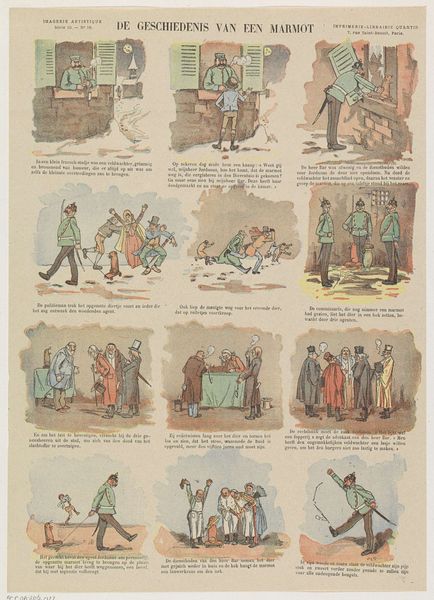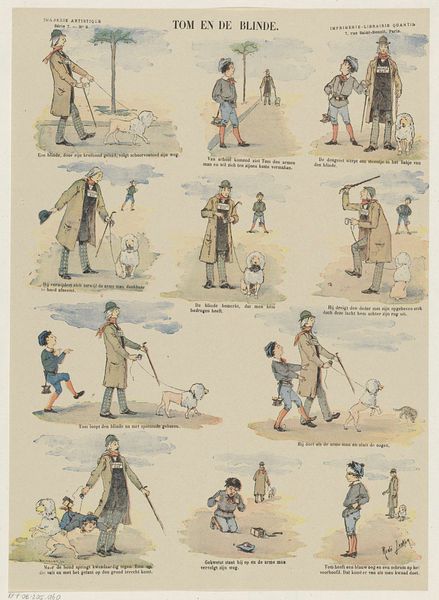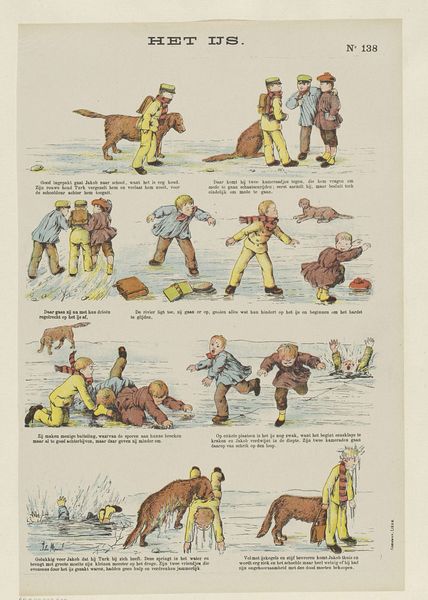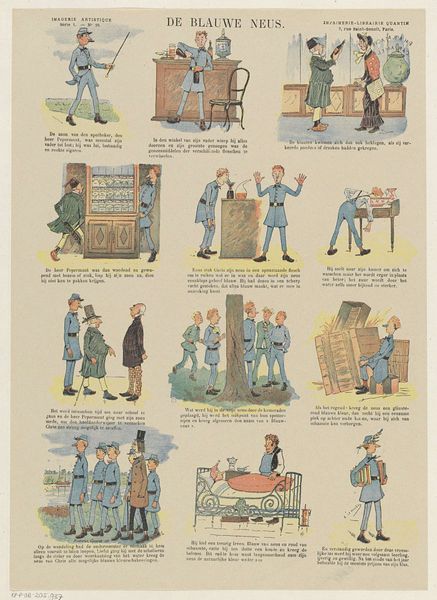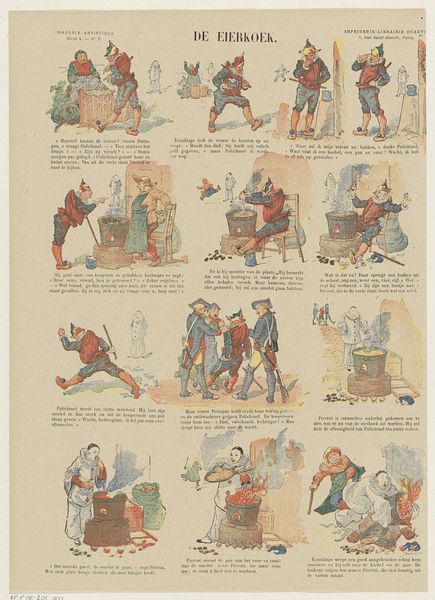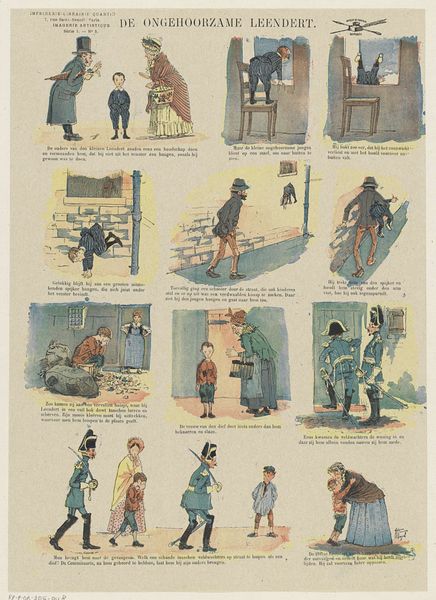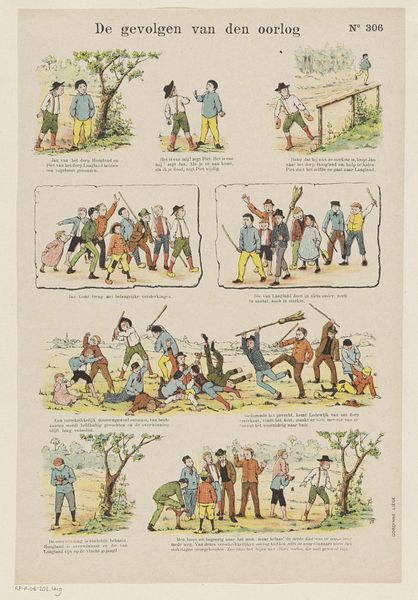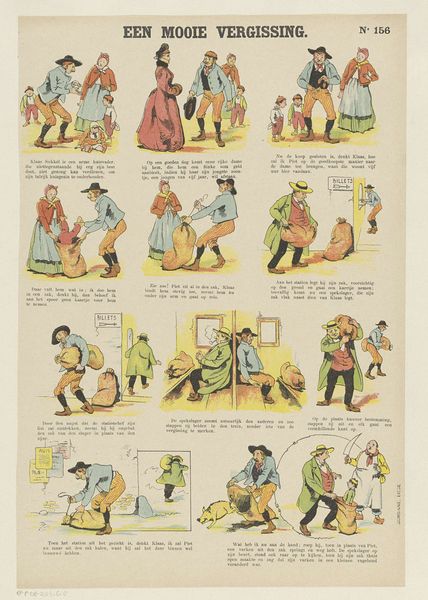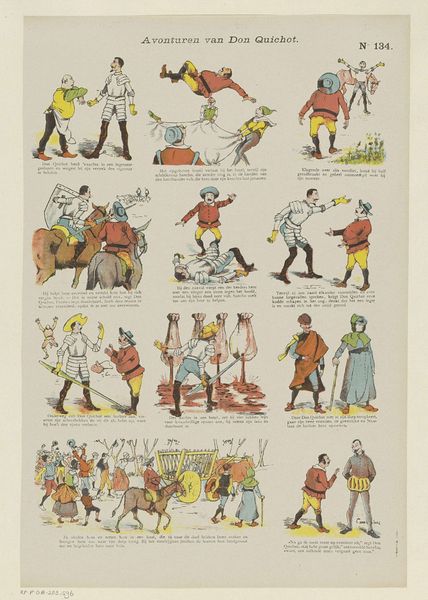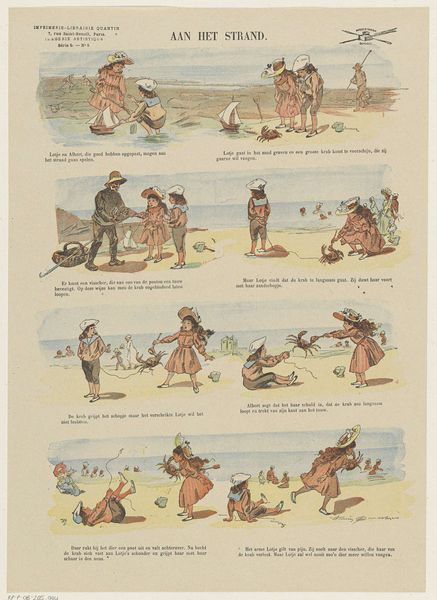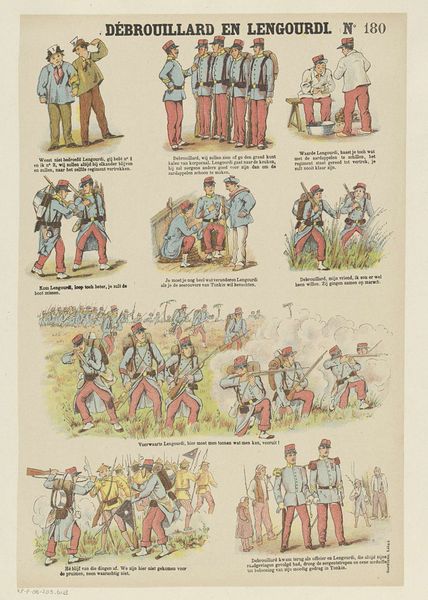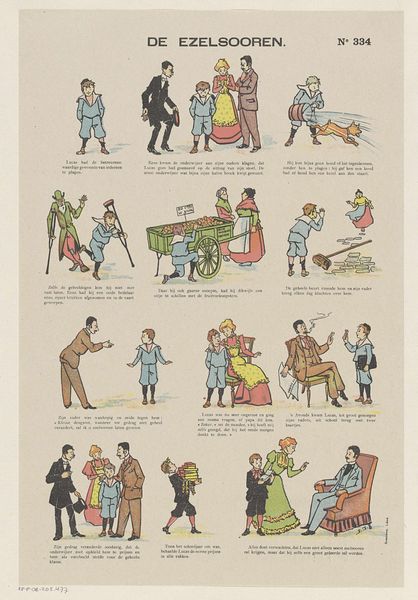
lithograph, print
#
narrative-art
#
lithograph
# print
#
impressionism
#
caricature
#
comic
#
genre-painting
Dimensions: height 367 mm, width 267 mm
Copyright: Rijks Museum: Open Domain
Curator: This lithograph, "De straatbegieter," dating from around 1876-1890, presents us with a humorous visual narrative. What are your first impressions? Editor: I’m immediately struck by the almost farcical quality. The looping, erratic lines of the water and the exaggerated poses give it a kinetic energy—a sense of chaotic playfulness. It's interesting that this scene is broken into many different little vignettes. Curator: Indeed. Structurally, the composition relies on this sequential arrangement of scenes, each portraying an event in the daily life of the “straatbegieter,” the street irrigator. The artist uses repeated shapes—the arc of the water, the rounded backs of figures—creating visual rhymes that connect the scenes. I love the colors in the work; the yellows and pinks alongside the green, blue and brown create great harmony overall. Editor: Looking at the attire of the characters, especially the gentleman with the top hat and cane, there's a strong echo of bourgeois society encountering, and perhaps being disrupted by, the working class. It almost presents as a caricature. Water itself, typically a symbol of cleansing and purity, is here a source of disruption, drenching passersby. What do you think that could symbolize? Curator: The water’s transgression of social boundaries! A physical representation of disruption. It echoes historical class tensions in Europe during that era—consider, in visual art terms, Daumier’s satirical prints which targeted the bourgeois. And on that note, even though the title seems to describe a scene from real life, it appears that this artwork contains its fair share of comedic themes. The slapstick humor, from people being unexpectedly doused to potential arguments, definitely leans towards comedy, wouldn't you agree? Editor: I concur. The comedic interpretation makes the artwork all the more accessible and brings to light underlying themes about the everyday life of city dwellers, but without malice. In the end, while seemingly frivolous, this print subtly uses humor to comment on its era's social and cultural dynamics. Curator: A perfectly valid take. Analyzing the visual elements of composition, color, and structure opens the work to broader contextual understandings.
Comments
No comments
Be the first to comment and join the conversation on the ultimate creative platform.
